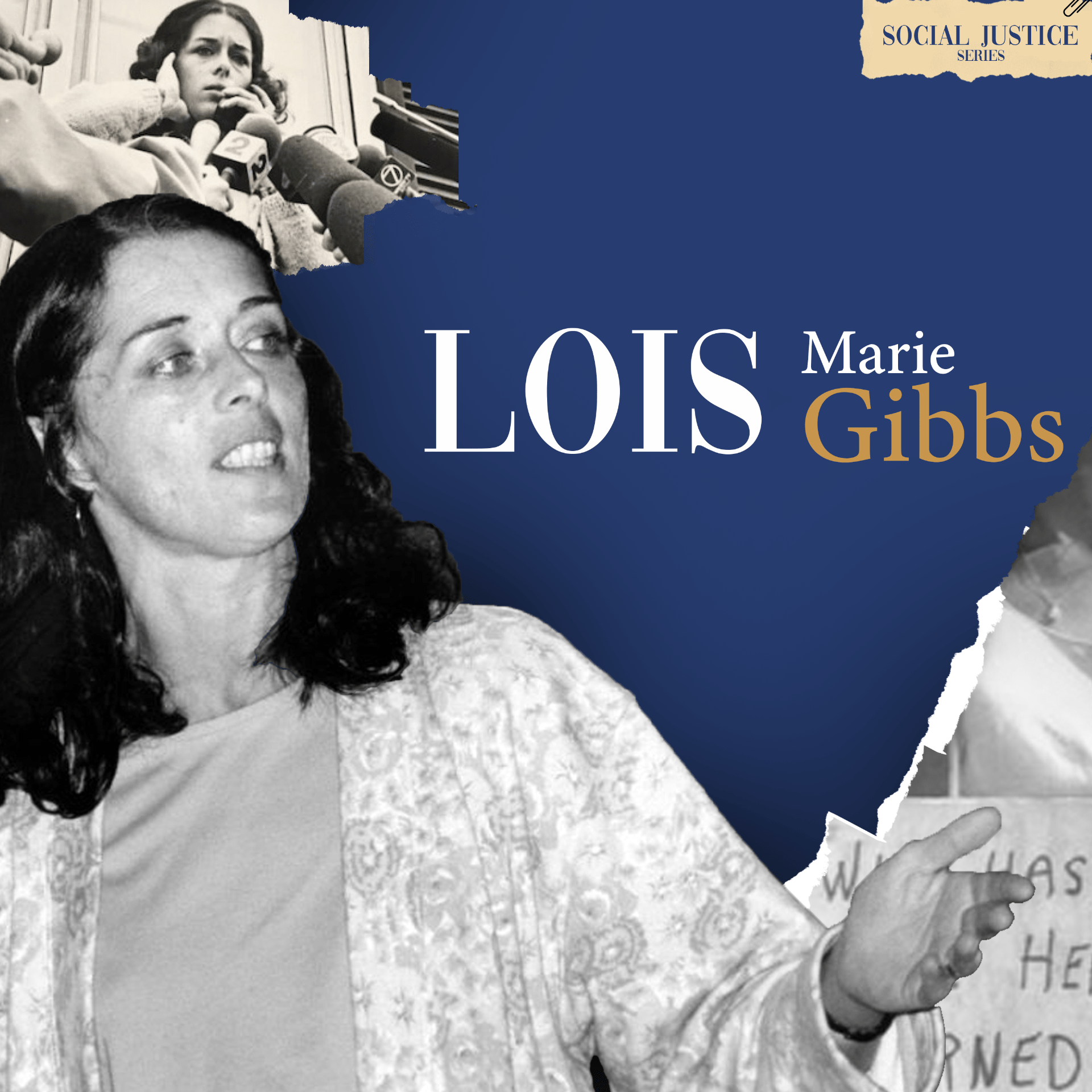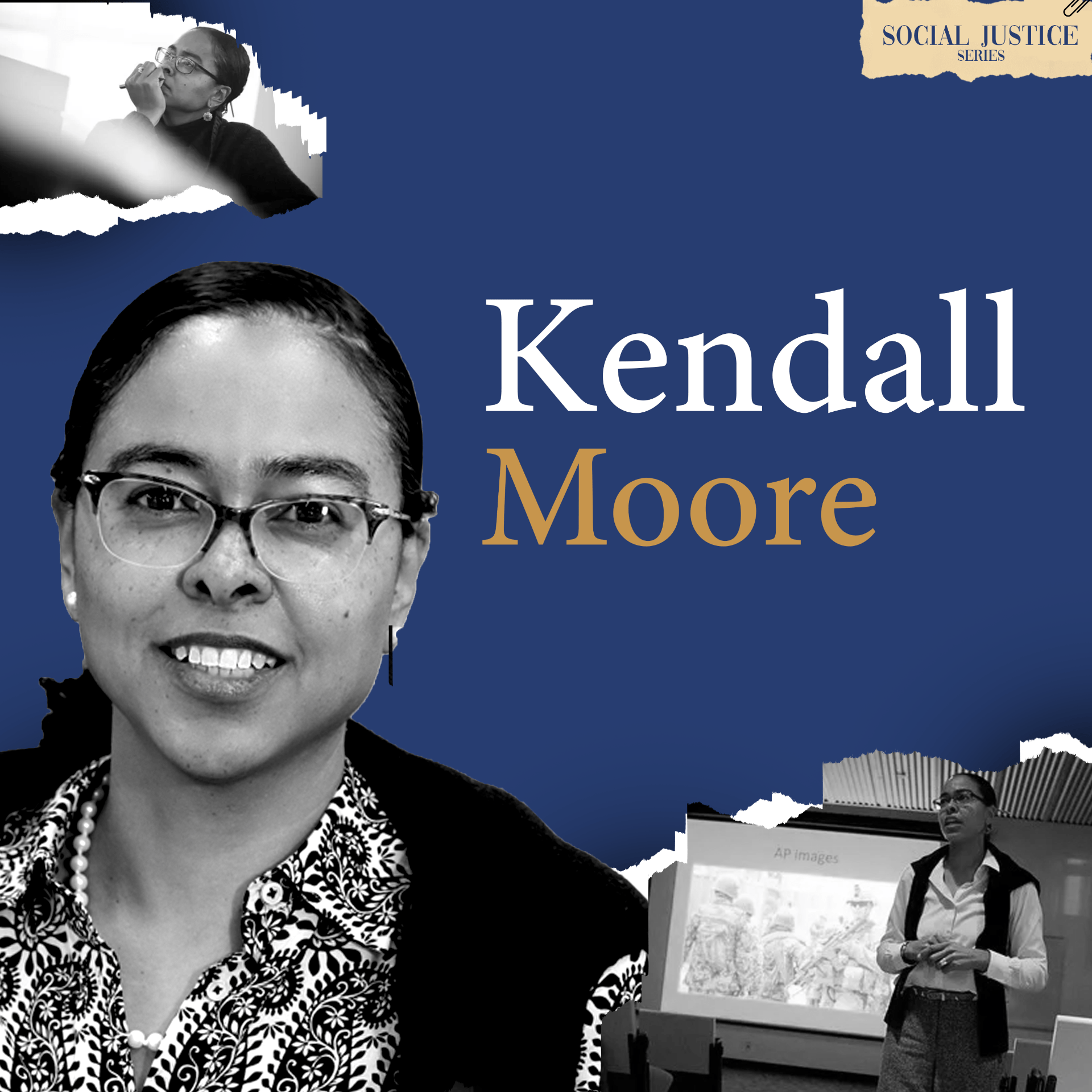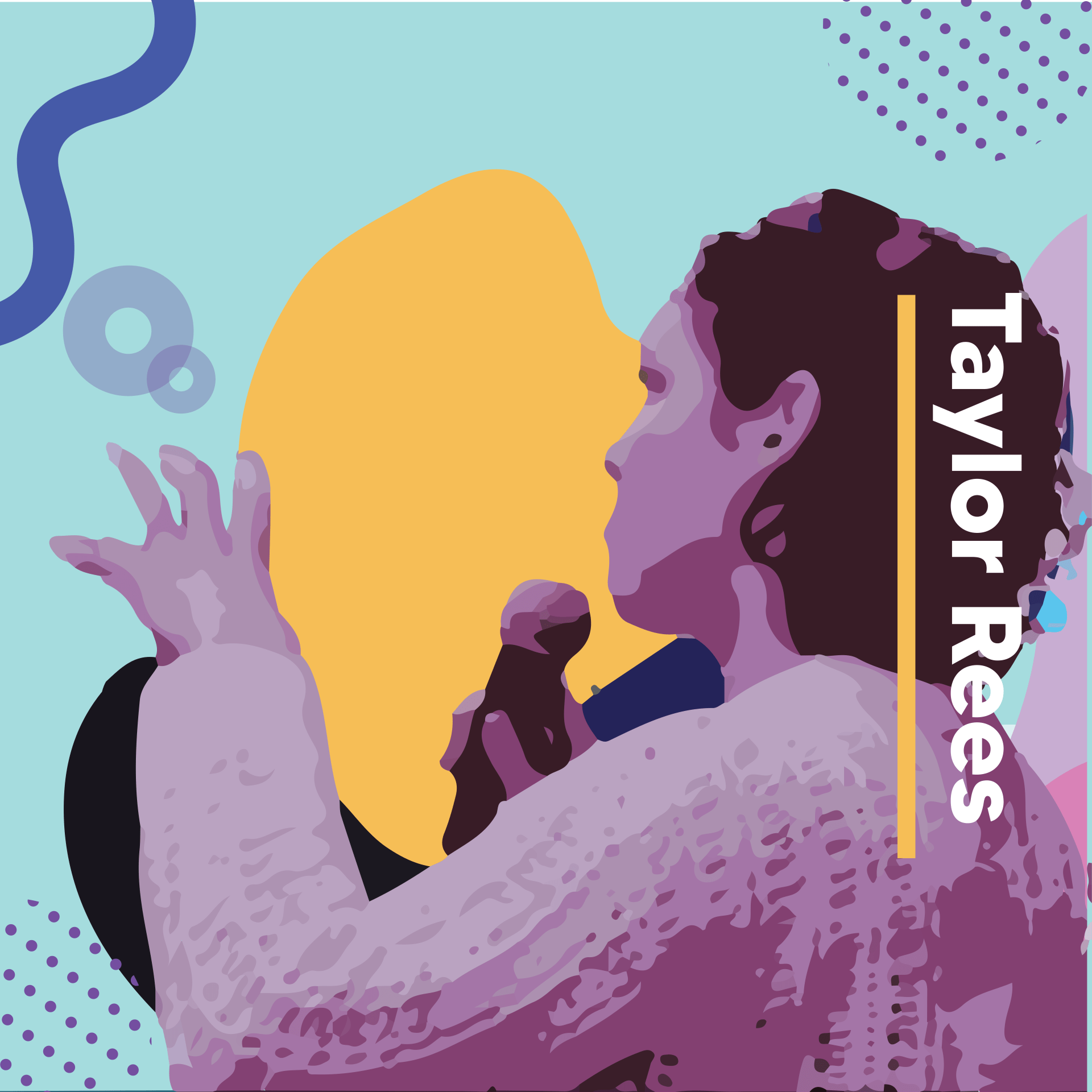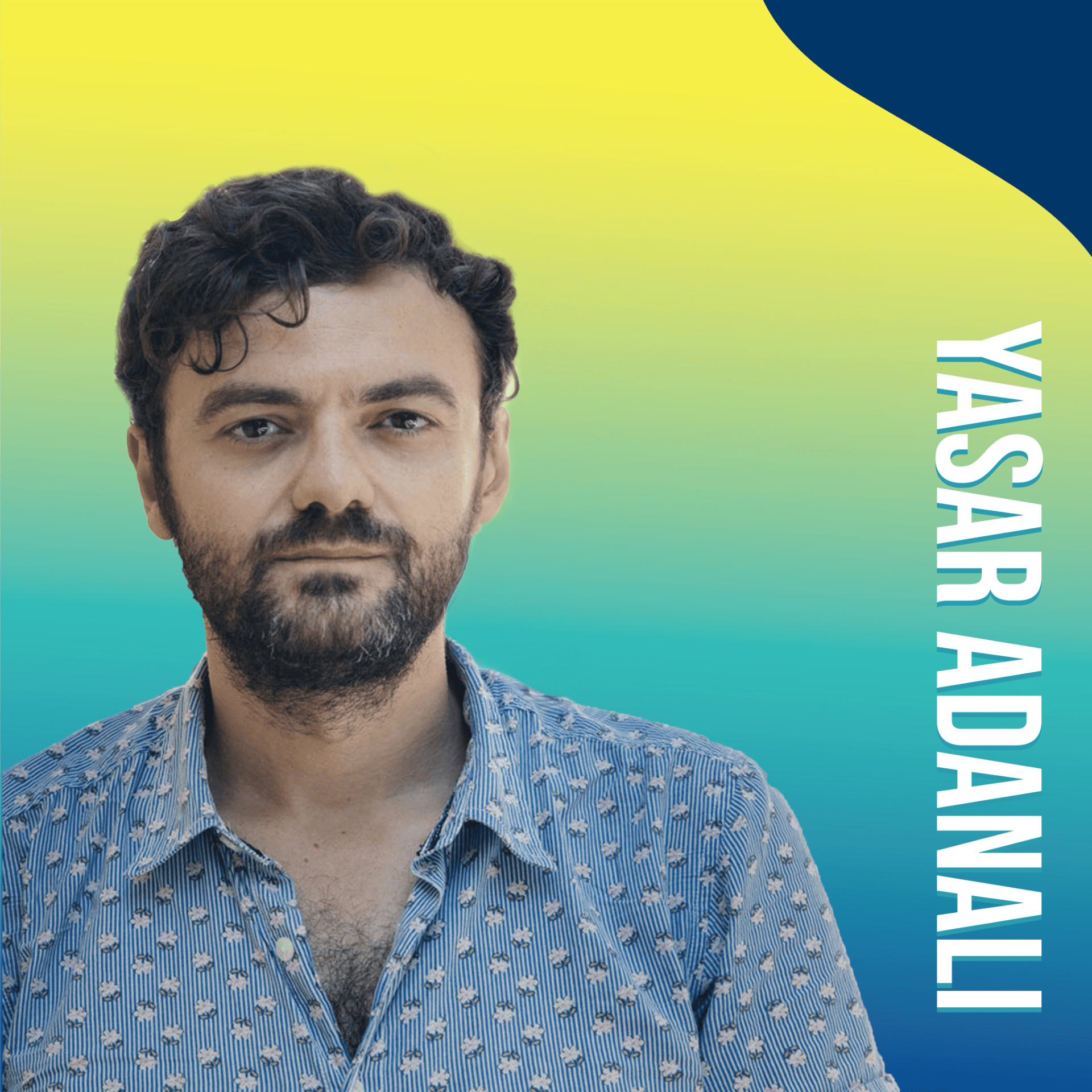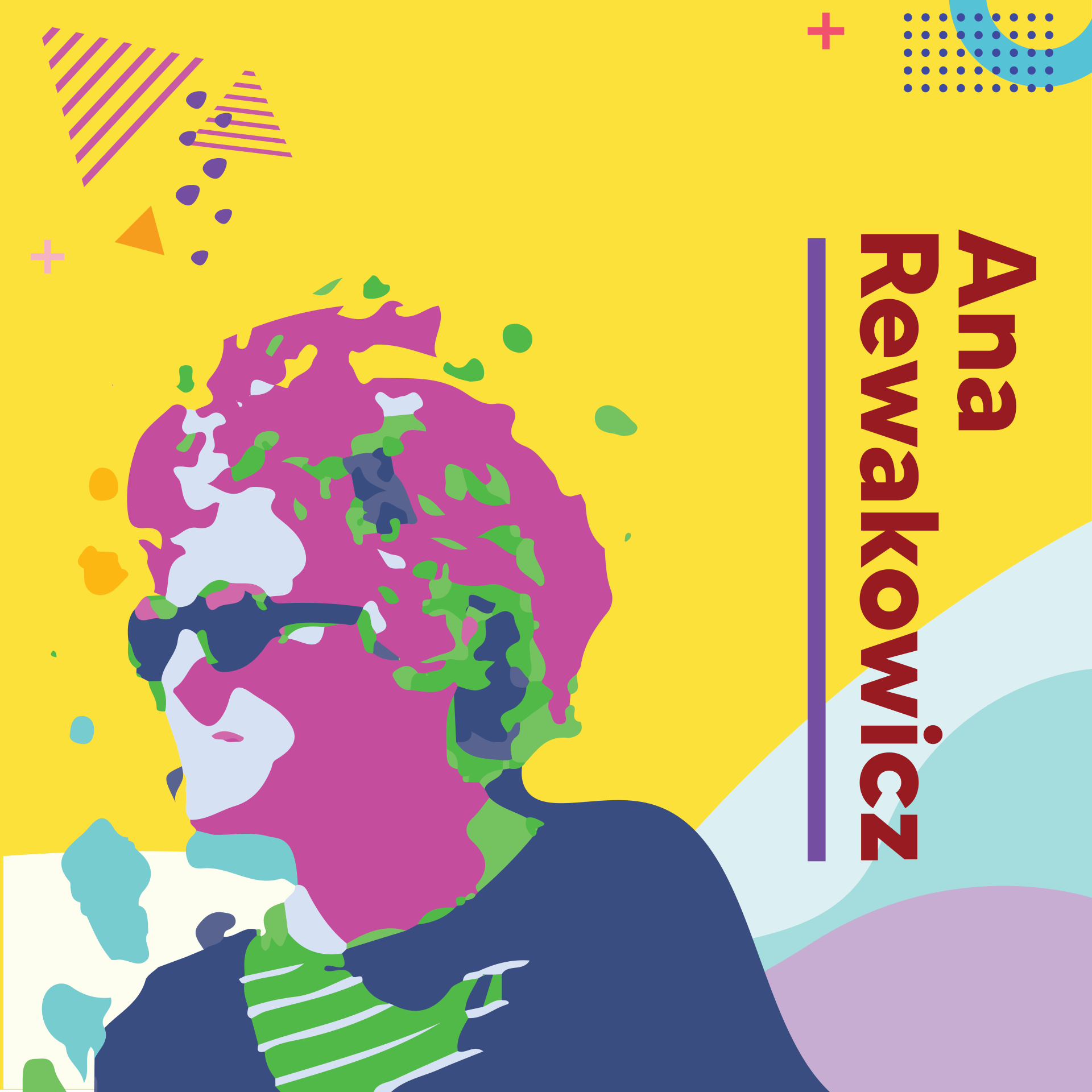
Episode #05
Ana Rewakowicz
on
Art-Science Collaboration
Join the Global Lab conversation with Ana Rewakowicz on her immersive, participatory artwork that involves salad grown from human breath, inflatable dresses and rubber latex rooms. She also discusses how she approaches the problem of freshwater shortage through her Mist Collector project. In this episode, Ana talks about the collaborative artistic and scientific process of her work, highlighting the need for arts and sciences to work together to solve large issues. If you ever wonder how institutes are enforcing the division between the arts and the sciences, and how we ca dismantle the divisive notion, then you are in right place!
Hosted by Stephen McCauley, The Global School, WPI
Ana Rewakowicz onArt-Science Collaboration
Guest Bio
Ana Rewakowicz is an interdisciplinary artist born in Poland, who lives and works in Montreal and Paris. A graduate of Ontario College of Art and Design, Toronto and Concordia University, Montreal (MFA), she completed her PhD in art and science at École Polytechnique, Paris. She is the recipient of many awards and grants, and her artworks have been reviewed in various magazines and books such as the “Inflatable: Art, Architecture and Design” anthology. Her nomadic artwork SleepingBagDress is featured in Microtopia, a documentary film by Swedish director Jesper Wachtmeister about micro dwellings, downsizing and living off the grid.
Transcript
Scroll to read more
Steve McCauley 00:00
I’m here today with Ana Rewakowicz from the Ecole Polytechnique in Paris. She’s doing her doctoral studies in Arts and Sciences at the Ecole Polytechnique. And she has very interesting background in the arts as well. And she is our artist in residence here at WPI is global lab. This term. It’s been a real delight having Anna here with us in the global lab and a welcome. And we’d like to talk a little bit today about your art your work at the interface of art and science and some of the interesting projects that you’ve been doing. So maybe we can just start by learning a bit about your artistic background. Some of you remain work are the kinds of things that you’ve mainly been working on over the years. And then we’ll talk a little bit after that about the fog water harvesting project.
Ana Rewakowicz 00:46
Thanks, Steve. It’s really great to be here at the Global lab. And first of all, I just want to say thank you very much for inviting me, it’s really been a pleasure to interact with different faculty members and students. I think. I’ve encountered really amazing students here, and I think it’s really helpful, especially when we think and talk about the climate change. I think that this young energy is very, very important. And the people students that I talked to, and then counter, it’s been very inspirational,
Steve McCauley 01:33
written. Glad to hear that. Yeah, yeah.
Ana Rewakowicz 01:36
So about my artwork. So I’m an interdisciplinary artist. And for many, many years, I’ve been working with inflatable structures in the context of the environment, portable Arctic architecture, and the body. So during that time, I was very much influenced by different architectural groups from the 60s, especially the British architectural group called Archigram. And I think that these groups already in the 60s in the 60s, were addressing a lot of issues that we still talk about today, issues of the environmental issues, issues connected to alternative ways of living, issues of consumerism, and the Archaea gras, I mean Archigram they also in the invented concept of clothing for living in and basically that meant of using structures that when they inflate the change into a different environment. And that concept inspired me to create three prototypes of three different dresses. So one is called the sleeping bag dress. And it’s a chemo type dress that when it inflates it changes into a cylindrical container in which one can sleep. Then there is a parachute dress so self explanatory of whether these planes you can two changes into a parachute sort of female James Bond and then never dress it’s called Lifesaver dress, which is basically when the inflates it in a when an inflated creates a ring that you can float on water. Yeah. So from these three prototypes, I created two but especially the one that I did the most of it’s a sleeping bag dress. And I was I wanted to be very much off the grid when I was designing and making that dress. So I used a small solar panel and connected to batteries that were incorporated in the dress itself and then use a small computer fan to for inflation. And I did walking performances in this dress and in different cities, different places. And for example, in Mexico City, I invited people to take me to their favorite places in the city and I let people occupy those places in Inside the dress, and I also had conversations inside the dress that I recorded about what it meant to them to be inside this cocoon in different places, and what it felt like experiencing that being inside. And other places other than that I walked on the street and just inflated different location at different times, and had different interactions with strangers on the streets. And that was in Brussels, in Toulouse in France, and in Tallinn, Estonia. So there were the four locations. And then in the gallery set up, I made a replica of the cylinder on the larger scale. So the sleeping bag dress was it the size of it, it was a body size, so and the replica was kind of almost like three times bigger. So people could go inside and lie inside this replica, the big cylinder and watch the documentation of video performances.
Steve McCauley 06:18
So it’s performance art, in addition to installation art, in a way it’s meant to engage actively
Ana Rewakowicz 06:25
is from the very beginning all my art process was very much or focused or oriented towards while we insert interaction or participation and I think it kind of came out of a desire that is as as an artist or as a person who will, who was educated in art. So you always well, actually for a majority of people, you always when you go to a museum, there are always asides please do not touch. And part of me really wanted in a sense to rebel against this, please do not touch. And I wanted two people to touch I wanted two people to wear, I wanted people be inside I wanted two people participate. So all that was very much part of my desire when making the artworks. And yeah, before for quite some time, I use rubber latex as as the material to make artworks. And that came from a desire to explore the sense of touch. Because rubber latex is one of the material like the closest that resembles skin and skin is one of their largest body organ that through which we experience touch. So I made for example, I painted a room in my apartment in Montreal, I cover entire room with in rubber latex painting it multiple layers, so I could build up a thickness. And then they peeled it off and I end up with this skin of the room. And then I use another layer two of latex to connect two layers together so the entire room could go up being inflated, but then when you walk inside, so I lead people to walk inside this inflated room. So when you step inside, well there’s actually a few interesting and kind of funny experiences. But when you walk inside you see the real imprint of the room because rubber latex has this amazing property that can pick up everything. So including cracks on the wall, of course in you could see the wooden floor, you know, with dirt inside, you know, it was just very baldly and very kind of human experience. But it was also funny because it was a room, you know, full of air. And and because it was all inflated, it kind of looked nice and puffy. So a lot of times people would kind of dive into it. And they didn’t realize that rubber latex it’s also very stretchy. So then they would hit the floor. Or if they tried to walk in an inflated room, it’s actually quite difficult to walk in the inflated room. It’s kind of like walking like treading through the fruit water or in snow in deep snow. So it’s very easy to lose your balance and Then in the room full of air, there’s nothing to hold on to. I mean, you can hold on to air, but then you fall.
Steve McCauley 10:08
Right? Alright. So your art has a lot of intention ality behind it in terms of what you want to invoke, I think Did you hear from people about their experience? And did it match what you anticipated? People would? Would that would come up for people? Um,
Ana Rewakowicz 10:27
yes, of course. But that in my intentionality, I see it more as a platform of set, like I set up a platform for interaction. And then I let it happen, whatever happens, so my intentionality in different artworks, but it never went to the point that I wanted to, in essence, control how people experience that. And, and because of that, I had different reactions. And some people loved it, some people hate it, some people, you know, like with my artwork when I did inflatable, well, I made them. I made a hydroponic system. And I invited people to donate their breath, or to the plants that were that I planted inside. And for example, that was a kind of, I like to imagine as, as the larger experiment of how human breath of how humans can influence plants growth. But after the exhibition, so there were there were plants inside edible plants. And after the exhibition that lasted about eight weeks, so about two months, I made the salad that I served to people. And that was very interesting that some people really had a huge objections to eating the salad, because they were saying that I don’t know who was blowing, and what kind of breath was that? So? So yeah, it’s I think I never tried to, you know, in a sense, set up specific reaction, I let the reactions to kind of happen as as they. Yes. From different background. Yeah.
Steve McCauley 12:23
So then your work has taken you to the Ecole Polytechnique in Paris, and you’ve been working particularly on the fog water harvesting project. Can you tell us a little bit about that project?
Ana Rewakowicz 12:34
Maybe before that, I’m going to say how I got to Polytechnique. So I got to Polytechnique on the cloud. Do tell because I made an artwork, that is called the cloud. And it’s an inflatable object in the shape of the cloud. And then I asked people, I invite people to pump water to the cloud. And then when people pump water to the cloud, the cloud becomes heavier, and then comes down. And then at some point, water mechanism inside over spills, and then the cloud rains. And then when it emptied cells from water and becomes lighter, it goes up. So it’s kind of a hydrological cycle of, of water and, and also pointing out that we are all weather makers,
Steve McCauley 13:33
right? The human agency, yes. Similar to grow into plants. Yes.
Ana Rewakowicz 13:37
So I did a presentation of this artwork at the symposium called water in the air that took place at ie Maha. It’s a, it’s a center of art and Research Center in Marseille in France. And this is where I met at a scientist John Mark Shammas, who later invited me to come to Polytechnique and work on the project of collecting water from fog. So, when I came to Polytechnique, I started to work with another scientists very closely coming to power. And maybe to explain a little bit what involves or what collecting water OFAC is in general. So in different parts of the world where there’s very little precipitation and very little groundwater fog, which is actually cloud close to the ground becomes the only source of water available. And whole ecosystems are being developed based on the availability of water from from fog. And in those areas like in coastal areas or long South America are like Chile and Peru, a lot of times there are desert areas. So in Chile, it’s the Atacama desert or west coast of Africa, like in Morocco, also Namibia. So in those places, fog is very important, as a as a source of water. So in this project, the environmental concern is for present in the sense of how to address the global issue of diminishing water sources in the world due to climate change to industrial agriculture, and also pro proliferation of water bottles, brand branded water bottles everywhere. So, water resources are diminishing, or being polluted, or, yeah, so, so, so thinking about fog as the alternative source of water. And basically, it’s not a new technology, it’s been existing for quite some time. And as I find out when I was in Chile, that indigenous people there already long time ago used skins, to put in the path of the wind to collect some water, they were trying to collect them later as well. Fisherman’s noticed as well, that they had a collection of water on their nets when they were drying. So but a company that spread this technology on the on that kind of global scale on the larger scale, it’s a Canadian company. It’s called Arc Fault quest. And they started different projects in South America, in Africa, in Himalayas, as well in the power to help local communities to get water from fog. So technology, per se, it’s very simple when this important factor of it so you fog base a key is a cloud that contains a small water droplets already there in the air, so it’s a matter of wind bringing those small water droplets against a substrate. And then that produces a coalescence of water droplets that which are then they grow and become heavier and they drain. But one of the problems so the common fabric that is being used in this process is so called Rachele mesh. And the common problem that is being experienced that there is a lot of clogging. And then when the growing water droplets clog the mesh, it prevents them from drainage. So in our approach of getting together and working with scientists, we wanted to address this issue and we wanted to see how we can optimize this process. And when I started to work with coming to prom, she was very much involved in the research of capillary filaments and capillary elastic filaments and capillary
Steve McCauley 18:52
forces. And what kind of scientist or is she a scientist? Yes, she’s
Ana Rewakowicz 18:55
a scientist. She’s a researcher at the Fluid Dynamics Laboratory at Polytechnique in Paris. So, we really work side by side, she was showing me what what she has what experiments she has been doing. And I was in a sense reacting interacting to what I was seeing or what I was being exposed to. And through this process, we came up with a concept of kind of new paradigm in the sense that instead of using a mesh, which is always a grid, we decided to use and focus on parallel flexible fibers. And then, we sort of made different experiments together to see and observe how our proposition so the image that it will We came from our interaction was the image of a forest. So it was a forest of flexible fibers. And that was kind of a metaphor that were out that that was our inspiration. And when we were doing different experiments, also, we were producing artworks together, because we use the equipment that was being available there, which involved a fast camera, which takes up to 10,000 images per second. And we produce our first artwork, which is called THROUGH THE LOOKING mist. And then it sort of went, the research went side by side. So it was both artistic and scientific research that involves never installation, this is called Misty way, which involves three large scale screens made from parallel fibers. That and onto which we projected a video of water droplets inside the fog that were filmed with a huge magnification. And obviously working with the camera, the first camera, it allows you to show you things that are invisible to human eyes. So we capture those water droplets inside the fog. And then when we projected onto the screen, we got a double projection. So it created a very immersive environment, where and we also work with composer, electronic music composer who came to the lab recorded specific sounds pose specific, he recorded different sounds that he could collect from our experiments from setups, etc, that we had. And he made the composition for this installation. So it was very immersive installation, because you were surrounded by lights, sound and wind, in a sense, gentle blow of the fence that were in side the room. And it was very special because people as an artist, I can say that it’s not necessarily always that you see people spending a long time in in with artworks or in installations in generals. Just because we live in the culture that is we are so you know, bombarded by, by so many images and things that our attention span is very short. So it was very special to see people actually staying there in this room for a very long time.
Steve McCauley 22:55
Yeah, it’s kind of amazing. It’s just so different from what we sometimes are assume in terms of a real distinction between art and science. And here, you’ve really collapsed these ways of knowing and ways of being together. Can you speak to the broader motivation or philosophy either of the a cappella technique or this broader field of art science? And what is the motivation behind it? Is it to educate in different ways to show people experiencing it? Or is it about discovery or what what underlies that, that bridge?
Ana Rewakowicz 23:37
I think it’s the it’s a desire to really work interdisciplinary and kind of break the traditional traditional modes of disciplines and kind of divisions, specializations, which actually really prevent us to see see things. I like to say that we need to kind of flex a muscle that I see odd kind of like a flexing muscles that allow us to see allow us to see something were closed, but at the same time to zoom out and see something from a larger perspective. And I think the field of specialization, they create a scenario where you have to focus on something very specific. So you’re kind of like become myopic, looking at things very closely. And you have to go deeper and deeper. And sometimes in that approach, you you lose the sense of a larger picture you, you lose the sense of touch with broader view. And I think through this art and science collaboration, we are trying to also break notions, kind of that, you know, that, for example, art is sensible and science is not sensible, or that, you know, creative is art and science is not through a kind of trying to blur the boundaries between all this kind of static and conventional way that people see things. Because I think that we are all creative. So, creativity is not a sign necessarily to art scientists, well, basically, we’re all creative, but the question is, what do we do with this creativity. And, and therefore, you know, both scientists and artists and anybody else, chefs and cooks, and hairdressers, and everybody else can be creative. But, um, but it’s more within the institute, institutionalize and kind of the division, that that exists within educational system of knowledge, and we are very much trained in it. And this is the very much way we see it. And yeah, it’s, we were really facing a big, big issues in the world, or the climate change social and the rest. And I think the only way that we can face those big issues is by working together by collaborating together. So therefore, breaking the boundaries of the specific specialization or specific disciplines and bringing people from different different disciplines together to address larger issues.
Steve McCauley 27:23
That’s wonderful. And I’ve seen your artwork. So I know that it results in some really amazing, beautiful works and informative as well. So what are some of the challenges that you face and working in this really interesting interdisciplinary context?
Ana Rewakowicz 27:42
I think the challenges really exist with sort of changing people’s perspective and changing people’s way of of seeing things. Both on the inside and outside on the inside me, meaning even within collaboration, and among all what I think I’ve already described outside how it works. But within the collaboration, I think the challenge in there were multiple child challenges, I think that one of kind of the first one we have to address is, is different differences in languages. And it’s something that we take for granted that being educated and being specialized in different disciplines, we develop a kind of specific language that we operate in. And so communication becomes a little bit it’s kind of disjointed, in essence, because we can still use the same language. It’s not as I’m not talking about sort of, you know, different languages like French English, or polish or Ukrainian or any other, but I’m talking about that each disciplines brings the specific way of communicating and using language. So both of us can speak English and yet sort of misunderstand each other because of those kind of niche language that is being developed. And we take it for granted. And it’s so easy to think that the other person understands when they don’t understand and the other person thinks, Well, that’s what it means. But actually, the other person meant something completely different. So those miscommunications are there for often happen, and then never think I think the most important thing in color in this equation of the art science collaboration I would like to put emphasis on the word collaboration, I think this is the most important factor. Because it really, it’s, for me, it’s very similar to a relationship in which basically, two or more people come together and a, they have to be open to each other, they really have to have a desire to listen to the other person to understand another person, and also not not all sort of prioritize and not put values. So we cannot say in that moment that our science is more credible, or science is more, you know, important as art. In the other way, we cannot, as I said, say that creativity only is with art and not with science. So it’s really requires a certain openness to to accept that there are different ways of looking at the world, and experiencing the world from the different perspective.
Steve McCauley 31:22
And if you can do it successfully, I imagine it really opens everyone’s mind, and you probably learn a lot.
Ana Rewakowicz 31:29
Yes, I think so. I think so. But it’s, it’s yeah, it requires a lot still a lot of work because I think institutionally speaking, it’s not necessarily so easy also within the system, you know, while both ways, I think, although one way, I think it’s stronger than the other in the sense, you know, Can scientists be an artist? Yes. Can artists become a scientist? So this kind of questions of society, societal acceptance and credibility or even within the institutions as well. It’s an and funding as well.
Steve McCauley 32:17
What have you found in regards to that question? Can an artist be a scientist and can an artist BSI can an artist be a scientist? And can a scientist be an artist?
Ana Rewakowicz 32:26
I think from my experience, it’s easier understood and acceptable when a scientist becomes an artist than the other way around. And I also have experienced more people asking the questions, well, what what does art brings into science? Then the other way around, meaning what science brings to art somehow, what science brings to art is more kind of acceptably understood, as the other way around. So I think, I think maybe that points out two different value systems that society has to society’s views of, like how societies view for example, our science, what value is being assigned to science? And what value as a society assigns to art for example?
Steve McCauley 33:36
Well here WPI and Engineering University. How do you think we can embrace our differently or an engineering education more generally, what is the role of art?
Ana Rewakowicz 33:53
I think it would be amazing to bring art closer to engineering. And actually, there’s lots of commonalities between engineering arts, because they both involve of kind of making things right. So I think there is a lot of intersection. But it’s would be very important to incorporate art into engineering, education, because I think it opens and brings a different set of questions. And and let people reflect in a different way, rather than training engineers, sort of just as technicians, so as people specialize in, in a specific, you know, part of knowledge. So I think by bringing arts in to the education we can enlarge the way that they are being the way they see the world and if through that enlargement of the different way of seeing the world. I, I believe that that would produce a different kinds of engineers. Yeah, different kinds of people that that. Yeah, just see the world from a larger perspective and not just technical or technological or innovation as well.
Steve McCauley 35:27
Which, as you said, is especially important, as we try to address some really critical problems in the world like climate change.
Ana Rewakowicz 35:34
Yes, definitely.
Steve McCauley 35:38
What is the nature of the steam movement in I know you live and work in both Montreal and Paris? Is the steam stem plus the art? Is that a big movement in those places as well?
Ana Rewakowicz 35:50
Um, I have to say that, not while in it, I’m going to make a comment about Polytechnique in Paris. Now there are others not so much talk about steam or stem steam. Somehow I feel this is more North American approach. So in Canada, it’s definitely more kind of, there’s more talk about it. Then then maybe in in, in Paris, Haute, Ecole Polytechnique, I’m not sure if I can say about other institutions there, but definitely not so much at Ecole Polytechnique now. Okay.
Steve McCauley 36:37
So what’s next for you? And as you’re working on the fog water harvesting project, still, what do you see on the horizon?
Ana Rewakowicz 36:44
Well, I’m just finishing my PhD at the call Polytechnique, and I will have to turn myself into a writer. Explore a different discipline. And for the next. Well, actually, before that, I’m organizing garden, the sky water conference in Paris that will take place in June. And it’s an interdisciplinary conference that is trying to bring different people from different disciplines, artists, scientists, anthropologists, philosophers gardeners, too, to talk about atmospheric atmospheric water and also our relationship to environment. But after that, I’ll be focusing on on the writing. And after then we’ll see.
Steve McCauley 37:48
Okay, that’s great. And well. Good luck with the conference. That sounds really amazing. And good luck with your writing and best wishes with your work. And thanks again for being with us for the last week or so.
Ana Rewakowicz 38:00
Thank you very much. It’s been really great being here and it’s been a great experience. Thank you. Great. Thanks.


